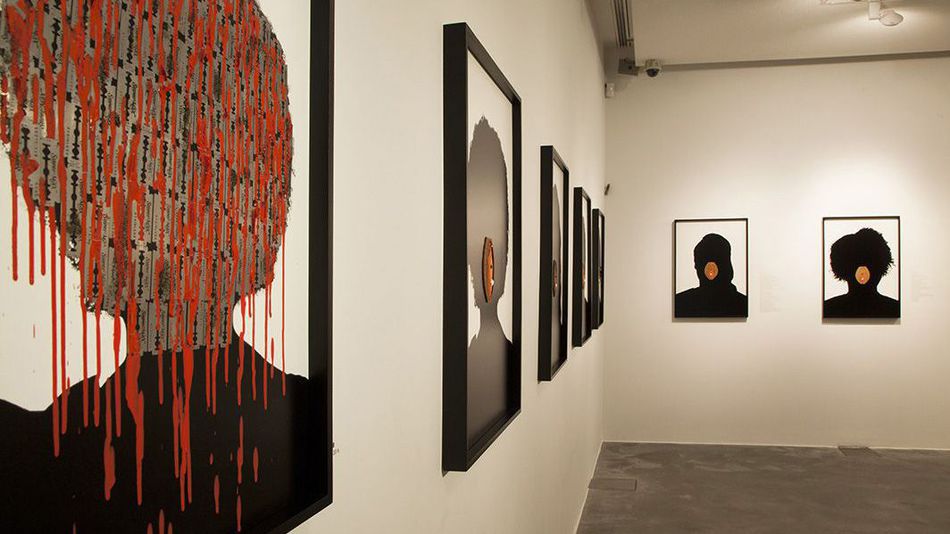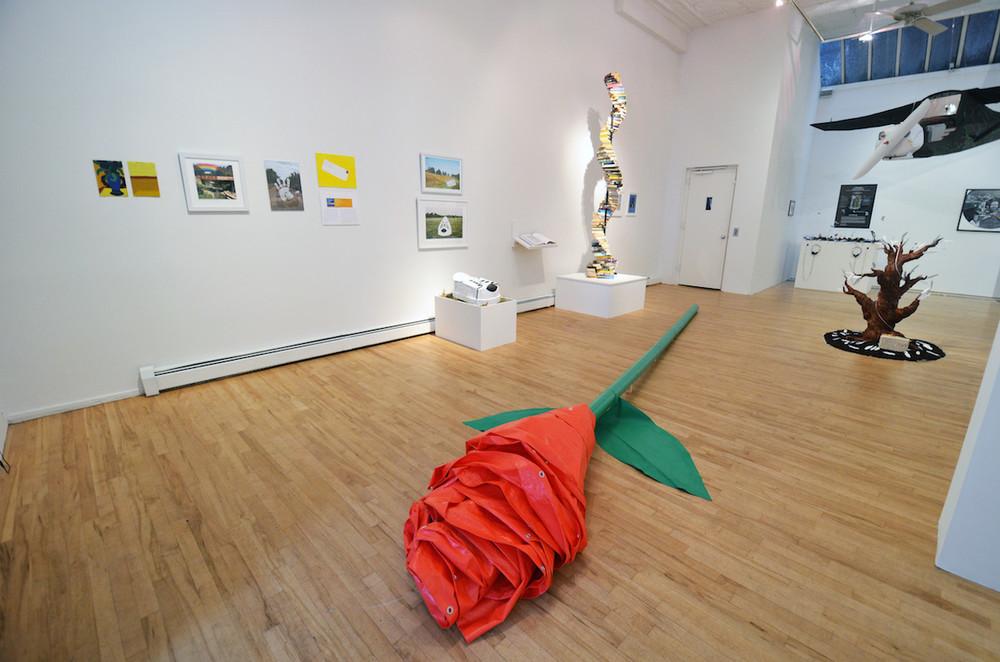
VACANCY is a collaborative exhibition space in Los Angeles directed and curated by Ali Edmark and Chris Adler. The space is now featuring a collection of artwork titled Open to the Public by artists Brody Albert and Kaeleen Wescoat-O’Neill that reflects the barriers and disorienting experience of finding your way around a city like Los Angeles. The artists highlight the very mindedness that goes into travelling around Los Angeles by utilizing small, insignificant (at least so we thought) features that are common to the city’s security, mobility, and surveillance. The very entrance to the exhibit itself is a fiberboard fences painted bright red. If not for careful given instructions from the gallery, most people would not even know how to get in to the exhibit to experience it.
On the front window of the exhibit, the movie “Driving in Los Angeles: The Fine Art of the Gesture” (2015) plays humorously showing audiences the many different and emotional hand signals drivers make during their daily commutes or outings. The most common and amusing one (something I am guilty of doing myself driving around urban San Diego) is called “the fuck?” I doubt an explanation is needed to know what this gesture actually looks like.
The artists skillfully blended the entrance of the exhibit to that of the city aesthetic itself. Black gum stains are all over the concrete floor which simulate daily pedestrian activity, and viewers are greeted with Google Maps on a computer screen displaying the numerous tunnels, roads, and highways that create Los Angeles’s geography and space.
To finish off the Open to the Public experience, the artwork “Double Doors” displays outlines of a front door and transom window, common in Los Angeles residential architecture. “The double-sides prints suggest interior and exterior space, although whether the viewer is positioned inside or outside of the door depends on their access to the dream of the single-family home”.
Much of 21st century geography is characterized by fences, walls, doors, and general distance. This distance is even more prevalent in urban areas. Open to the Public makes Los Angeles’s “geography inimical to the 21st century flaneur, who is confronted by a city fragmented by intrusions of the public and private”. The exhibit exemplifies the physical barriers between public and private space in a way that disorients and antagonizes those who experience it.
I’ve noticed a constant power struggle between public and private space especially when pertaining to artistic practices. Does the space in which the art is displayed contribute to or take value away from the piece? Certainly there is art made of public space and art made for private space, but is one better than the other? Brody Albert and Kaeleen Wescoat-O’Neill did an excellent job showcasing and antagonizing our use of and barriers of public space—all while being housed in a private gallery.
I would be interested to hear the reactions of viewers to Albert and Wescoat-O’Neill’s exhibition, and would keenly listen for differences between city dwellers and non-city dwellers. I do not doubt that the exhibit elicits alienating feelings for all of its audience, but I would think city dwellers would be far more disturbed to be face to face with the very harsh barriers they maneuver around in everyday life. It is kind of like “Hey look at all of these fences and doors and walls you are trapped in in this city”. It would not surprise me if city dwellers might feel a bit claustrophobic during their time in the gallery.
Non-city dwellers, on the other hand, might find the art pieces to solidify their reasoning for not being a city dweller to begin with. Who would want to deal with city traffic, fences, and barriers anyway? Rustic or even suburban folk might take away insight on “how the other half lives” from the exhibit. As a suburban dweller who moved to urban San Diego just a couple years ago, I have found myself in awe of the idea of a “downtown” and that I was a close drive or public transportation ride away from it. Here I am in a place where 24 hour Mexican food is a thing when where I am from nothing open past 9pm is less than an hour drive away.
The people themselves and their relationships seemed to be much more distant as well. A friendly wave is not taken to the same way in and out of cities. Non-city dwellers who travel to Los Angeles and to VACANCY to see Open to the Public see the fences and barriers as just another unpleasant aspect of city living. The culture shock goes both ways, but either way every viewer can and will take something meaningful from their time in VACANCY’s Open to the Public.







